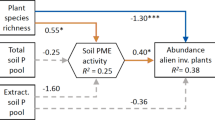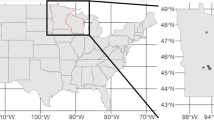Abstract
Background/Question/Methods:
Invasive species are increasingly problematic world-wide. Scientists working to understand why invasive species are successful must first understand the processes of invasion. Invasion facilitation and empty niche exploitation are key processes that have not been well-studied in species rich ecosystems such as riparian areas. In the southwestern United States (U.S.) two prominent invaders of riparian habitats are the exotic woody plant species tamarisk (Tamarix ramosissima, T. chinensis, and their hybrids) and Russian olive (Eleagnus angustifolia). These plants were introduced by humans throughout the southwest around 1900. Both tamarisk and Russian olive have invaded the ephemeral stream system in Canyon de Chelly National Monument, Arizona. We worked in sites within Canyon de Chelly and throughout the region to address the following questions: (1) does Russian olive have a broader niche than cottonwood and tamarisk? And (2) can cottonwood and tamarisk facilitate Russian olive invasion by providing shaded habitat? We analyzed riparian tree seedling requirements in a controlled experiment, and performed empirical field studies at sites in Canyon de Chelly, and throughout the Colorado Plateau region.
Results/Conclusions:
Our controlled experiment and field surveys indicate that Russian olive can establish and survive under shadier and drier conditions than tamarisk and native cottonwood. Russian olive survival was significantly higher in dense shade, and low soil moisture treatments than tamarisk and cottonwood. In the field, we found Russian olive establishing on a local and regional scale, up to 8 meters above the stream channel, in sites where flooding cannot occur. It established under dense canopies of tamarisk, cottonwood and Russian olive. Tamarisk and native riparian plants species seedlings cannot establish in these dry, shady habitats. Russian olive is limited only by seed dispersal in southwestern riparian ecosystems. Although Russian olive did not show a preference for shaded habitat and is therefore not being facilitated by cottonwood and tamarisk, our results demonstrate it has a much broader niche than cottonwood and tamarisk. Some researchers suggest that native cottonwood trees are undergoing population declines and invasive tamarisk trees have invaded all possible habitats in the southwestern US. The potential for continued Russian olive invasions in southwestern riparian ecosystems is tremendous. Russian olive will likely increase in abundance while tamarisk and cottonwood decrease along rivers in the southwestern US. Generalist exotic species that have broader niches than native species have the potential to exclude native species and create novel ecosystems where community composition is dominated by exotic species.
Similar content being viewed by others
Article PDF
Author information
Authors and Affiliations
Rights and permissions
About this article
Cite this article
Reynolds, L., Cooper, D. Can one invasion lead to another? Niche space and the future of Southwestern U.S. riparian zones. Nat Prec (2009). https://doi.org/10.1038/npre.2009.3842.1
Received:
Accepted:
Published:
DOI: https://doi.org/10.1038/npre.2009.3842.1



